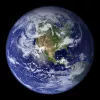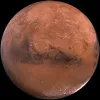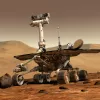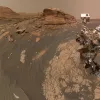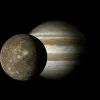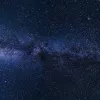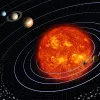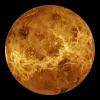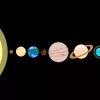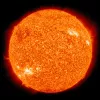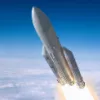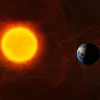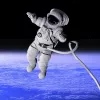Important update from TheSchoolRun
For the past 13 years, TheSchoolRun has been run by a small team of mums working from home, dedicated to providing quality educational resources to primary school parents. Unfortunately, rising supplier costs and falling revenue have made it impossible for us to continue operating, and we’ve had to make the difficult decision to close. The good news: We’ve arranged for another educational provider to take over many of our resources. These will be hosted on a new portal, where the content will be updated and expanded to support your child’s learning.
What this means for subscribers:
- Your subscription is still active, and for now, you can keep using the website as normal — just log in with your usual details to access all our articles and resources*.
- In a few months, all resources will move to the new portal. You’ll continue to have access there until your subscription ends. We’ll send you full details nearer the time.
- As a thank you for your support, we’ll also be sending you 16 primary school eBooks (worth £108.84) to download and keep.
A few changes to be aware of:
- The Learning Journey weekly email has ended, but your child’s plan will still be updated on your dashboard each Monday. Just log in to see the recommended worksheets.
- The 11+ weekly emails have now ended. We sent you all the remaining emails in the series at the end of March — please check your inbox (and spam folder) if you haven’t seen them. You can also follow the full programme here: 11+ Learning Journey.
If you have any questions, please contact us at [email protected]. Thank you for being part of our journey it’s been a privilege to support your family’s learning.
*If you need to reset your password, it will still work as usual. Please check your spam folder if the reset email doesn’t appear in your inbox.
The Solar System
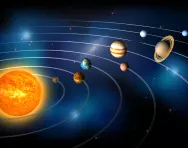
Contents:
What is the Solar System?
Top facts about the Solar System
Did you know
Solar System gallery
About the Solar System
The planets in the Solar System
Words to know when learning about the Solar System
Just for fun
Books about the Solar System
Find out more about the Solar System
See for yourself
What is the Solar System?
The Solar System includes the Sun, the Earth (where you are now!) and all of the other planets, asteroids and comets that go around and around it.
You may think that the Earth is a pretty big place, but the Earth isn’t even the biggest planet in the Solar System. The biggest planet is Jupiter – you could fit 1,321 Earths inside Jupiter. The Sun is even bigger than Jupiter – it would take 1.3 million planets the size of Earth to fill the same volume as the Sun.
Top 10 facts
- Everything in the Solar System revolves around the Sun. The Sun is a star – a massive ball of hot gas that gives off light and heat.
- There are eight planets that orbit around the Sun.
- The closest planet to the Sun is Mercury, and the farthest away is Neptune.
- The biggest planet in our Solar System is Jupiter, and the smallest planet in our Solar System is Mercury.
- The Earth is the only planet that we know has creatures living on it.
- The Earth rotates as it orbits the Sun. It takes one day to complete a rotation.
- It takes 365 days for the Earth to complete one circuit around the Sun. We call this a year.
- The Sun is just one of hundreds of billions of stars in the galaxy that we live in, which is called the Milky Way. The whole Universe has at least 100 billion galaxies in it.
- You are held onto the surface of the Earth by a force called gravity. This is the same force that keeps the Earth and the other planets orbiting around the Sun.
- Not everything in the Solar System orbits directly around the Sun. The Moon orbits around the Earth.

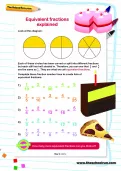
Boost Your Child's Learning!
- Get a tailored learning plan for your child
- English & maths resources delivered each week
- Interactive & printable activities
Did you know?
- The Sun is 93 million miles from the Earth. The light from the Sun only takes 8 minutes to travel to the Earth, but it would take Usain Bolt – the fastest man on Earth – 450 years to run from the Sun to the Earth.
- The Earth travels around the Sun in a loop that is shaped a bit like an oval. We call this the Earth’s orbit.
- The Earth is always spinning around – sometimes from where you stand on the Earth you can see the Sun (this is the daytime) and sometimes the part of the Earth where you are is facing away from the Sun so it is dark (this is the nightime). It takes 24 hours for the Earth to spin all the way around, and we call this a day. Find out more about night and day.
- There are eight planets in our Solar System that orbit around the Sun. In order, going from the closest planet to the Sun, to the one that is farthest away, they are: Mercury, Venus, Earth, Mars, Jupiter, Saturn, Uranus and Neptune.
- All of the planets and the Sun are round, like balls.
- There is a lot of difference between the planets in our Solar System. Some planets like Earth are made of rock, and some like Jupiter are made of gas. The hottest planet is Venus where the average temperature is 460°C, and the coldest is Uranus, which is -220°C.
- Mars is sometimes the called ‘the red planet’ because the rocks that it is made from are red. It is the closest planet to Earth, and is slightly smaller than Earth.
- The biggest planet in our Solar System is Jupiter. Jupiter is made of gas and is so big that you could fit 1,321 planets the size of Earth inside it. There is even a storm on Jupiter that is bigger than Earth – this storm has been blowing for hundreds of years and is called the ‘Great Red Spot’.
- Saturn is famous for having rings of small pieces of ice and dust around it. Like Jupiter, it is made of gas and is much bigger than Earth.
- The Moon is a ball of rock that orbits around the Earth, in the same way that the Earth orbits around the Sun. It is much smaller than the Earth and takes 28 days to complete one orbit. The Moon is 239,000 miles away and is the only place in the Solar System that man has travelled to apart from Earth. Find out more about human space exploration.
- Other planets have moons too. Jupiter has at least 66 of them!
Look through the gallery below and see if you can spot all of the following:
- The planets which make up our Solar System
- The Earth, seen from space
- Mars
- A Mars rover
- The surface of Mars seen from the NASA rover ‘Curiosity’
- Jupiter
- The Milky Way
- The Solar System
- Venus
- An illustration of the planets in order
- The Sun
Gallery
About
It takes just over 365 days for the Earth to travel all the way around the Sun. We call the length of time it takes to go around the Sun a year, but to make life easier, most years have 365 days and every 4th year has 366 days. We call a year with 366 days a leap year. The extra day is February 29th. 2012 was a leap year, and 2016 and 2020 will be leap years.
The same force that holds you on the surface of the Earth so that you don’t float away when you jump, is what keeps the Moon revolving around the Earth and the Earth revolving around the Sun. This force is called gravity and the first man to discover that it existed was Sir Isaac Newton in the 17th century.
Earth is the only planet on which we know that there have been plants and animals living. On some planets there is no air to breathe and on others it is either too hot or too cold. Some scientists think that creatures may have lived on Mars millions of years ago, when Mars was warmer and had more air – they try to find evidence to show this is true.
Until 2006, people thought that there were nine planets in the Solar System. The ninth planet was Pluto and it is even further away from the Sun than Neptune. Astronomers decided that Pluto was too small to be called a planet, so now there are only eight planets.
The Sun is a star, a huge ball of very hot gas. The temperature of the Sun is around 5,500°C – it’s so hot that you can feel the heat from it on Earth, millions of miles away, and see by the light that it gives out. The Sun is about 4.5 billion years old and will last until it is about 10 billion years old.
There are more than 100 billion stars in the Milky Way and there are many different types of star. Our Sun is of a type called a “yellow dwarf”. Scientists group stars together by how big they are and how bright they are. Some examples are red dwarfs and supergiants. A red dwarf is a star about half the size of the Sun and a lot less bright than the Sun. A supergiant star is about 70 times as big as the Sun and can be 100,000 times as bright.
The nearest star to the Earth after the Sun is Proxima Centuri. It is red dwarf that is smaller and colder than our Sun and gives off a lot less light. Even though it is the closest star outside the Solar System, the light from it is too faint to see except with a telescope. Proxima Centuri is 24 trillion miles from Earth and light from it takes four years and three months to reach Earth.
The planets in our Solar System
Mercury – this is the closest planet to the Sun. It is the smallest planet and is made of rock. It is so close to the Sun that it only takes 88 days for it to complete its orbit and is much hotter than Earth.
Venus – Venus is the next planet from the Sun after Mercury. It is also made of rock. Like Earth, Venus has an atmosphere (air) around it, but it is a lot thicker than Earth’s and Venus is permanently covered in clouds. Venus is the hottest planet and has an average temperature of 460°C. It is about the same size as Earth. It takes 225 days to travel around the Sun.
Earth – This is where we live! Earth is made of rock and is the only planet where water is liquid. The other planets are either too hot or too cold. Earth takes 365 days to travel around the Sun.
Mars – Mars is a little smaller than Earth, but a lot further out. It used to have an atmosphere like Earth and Venus, but it doesn’t have very much anymore. Mars is reddish in colour and is sometimes called ‘The Red Planet’. Mars takes 687 days to complete its orbit pf the Sun and the average temperature is -63°C.
Jupiter – Jupiter is the largest planet in the Solar System. You could fit 1,321 Earths inside Jupiter. It is made of gas and is one of the four ‘gas giants’. Jupiter has 66 moons; one of them, Ganymede, is bigger than Mercury. Jupiter is five times as far from the Sun as the Earth is and takes almost 12 years to travel around the Sun.
Saturn – Saturn is famous for its rings. The rings were first observed (with a telescope) in 1610 by Galileo and are made up of huge numbers of small lumps of ice and dust (mostly ice). The pieces in the rings may be as small as a millimetre or as large as a few metres across. Saturn is the second largest planet in the Solar System and is another one of the ‘gas giants’ like Jupiter. It takes 29.5 years to travel around the Sun.
Uranus – Uranus is another of the ‘gas giants’. You could fit 63 planets the size of Earth inside Uranus. Uranus takes 84 years to orbit the Sun and is the coldest planet, with an average temperature of -220°C.
Neptune – Neptune is the farthest planet from the Sun. It is 30 times as far from the sun as Earth and takes 165 years to travel around the Sun. Neptune is the last of the four ‘gas giants’ and is 58 times the volume of Earth.
Words to know for learning about the Solar Sytem:
Asteroid – Asteroids are bodies of rock and ice in space. Millions of asteroids orbit the Sun -most between Mars and Jupiter. They vary in size between 1 metre across and 600 miles across.
Atmosphere – the layer of gas around a planet
Comet – a comet is a body of ice, dust and bits of rock that passes through space leaving a tail of ice and dust behind it. A comet may be up to 25 miles across.
Day – the length of time it takes the Earth to spin all the way around so that you get a night and a day – 24 hours
Galaxy – a large group of stars, all orbiting a central point.
Gravity – the force that attracts a moon to a planet, or a planet to a star
Light Year – the distance that light travels in one year. 5.9 trillion miles
Meteor – a small piece of debris in space, up to the size of a boulder
Milky Way – the galaxy that we live in
Moon – A moon is a smaller object orbiting a planet. Some planets have many moons. Earth has just one, called The Moon.
Orbit – the path that a planet takes around the Sun, or that a moon takes around a planet
Planet – a large body of either rock or gas that follows a consistent orbit around a star
Shooting star – This isn’t really a star! A shooting star is a meteor that is passing through the Earth’s atmosphere and has got so hot that it glows in the night sky.
Solar System – the Sun and the collection of stars
Star – A star is a huge ball of very hot gases, that gives off lots of light and heat. Some stars have planets orbiting around them, but not all do.
Sun – the star in our Solar System
Universe – The Universe is everything that exists: all the galaxies, all the stars, all the planets and everything in between
Year – the length of time it takes the Earth to travel around the Sun, 365 days
Related Videos
Just for fun...
- Read fun facts about each planet in the solar system and hear how they are pronounced
- Learn a song about the Solar System from the TARDIS
- Take an interactive tour of the Solar System.
- Explore the moon in 3D
- Listen to astronauts explain what it's like to travel in space
- Take a quiz to see if you could live on Mars
- Complete the Planet Facts Memory Game
- Fly above the planets in this Solar System Explorer game
- Build your very own model solar system
- Show how much you know about our planetary neighbours with a Solar System quiz!
- Can you order our Solar System planets correctly?
- Make your own paper solar system mobile
Books about the solar system for children
Find out more about the Solar System:
- Read the National Schools' Observatory guide to the solar system for kids
- NASA StarChild
- NASA for kids; solar system exploration activities
- NASA – The Solar System
- Astronomy for Kids
- American Museum of Natural History: Astronomy
- Undestand how satellites, ground stations and mission planning work
- The NASA Jet Propulsion Laboratory has prepared lots of videos to answer frequently asked questions about Mars
See for yourself
- Watch an online model of our Solar System
- See the amazing gallery on space in the Science Museum in London.
- Visit Jodrell Bank in Cheshire, where scientists from the University of Manchester have made some amazing discoveries about the universe.
- Visit the National Space Centre in Leicester
FAQs about the Solar System
Q. What is the Solar System?
A: The solar system is like a big family of planets, moons, and other space stuff that spin around the Sun, just like how the Earth spins around the Sun.
Q: How many planets are there in the solar system?
A: There are eight planets in our solar system
Q: What is the largest planet in the solar system?
A: Jupiter is the biggest planet.
Q: What is the smallest planet in the solar system?
A: The smallest planet is Mercury.
Q: What is the hottest planet in the solar system?
A: Venus is the hottest planet.
Q: What is the farthest planet from the Sun?
A: Neptune is the farthest planet.
Q: What is the closest planet to the Sun?
A: Mercury is the closest planet.
Q: What is the difference between a planet and a dwarf planet?
A: A planet is like a big ball that goes around the Sun. It's so big that its gravity pulls it into a round shape, kind of like a giant marble. Also, planets have cleaned up the area around the Sun. This means they've pushed away or eaten up most of the smaller stuff floating nearby, like rocks and dust.
A dwarf planet is also a ball that goes around the Sun, but it's smaller than a regular planet. Because it's smaller, its gravity isn't as strong, so it might not be perfectly round. Also, unlike planets, dwarf planets haven't done a great job of cleaning up. There's still a bunch of stuff floating around near them, like rocks and ice.

